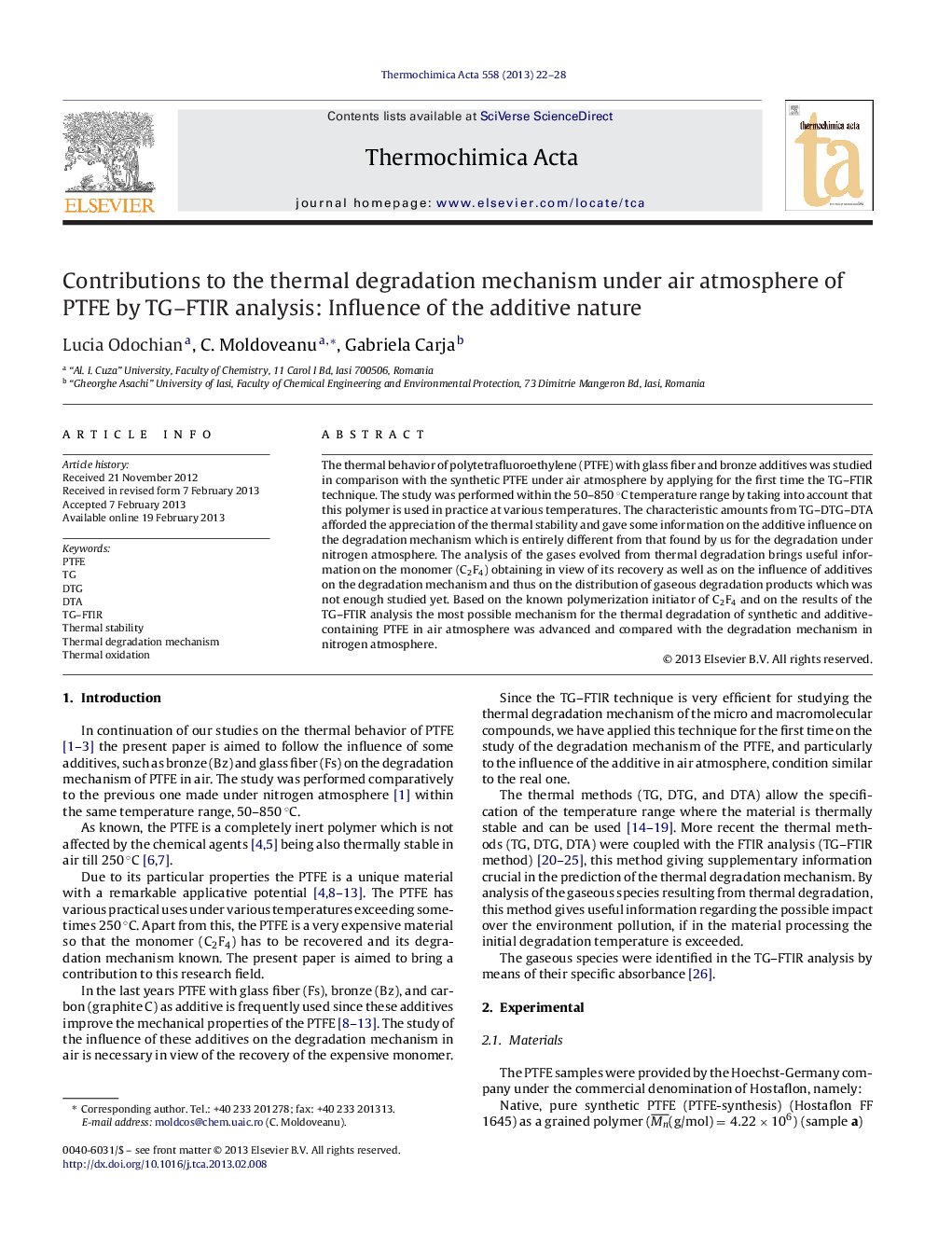| Article ID | Journal | Published Year | Pages | File Type |
|---|---|---|---|---|
| 673807 | Thermochimica Acta | 2013 | 7 Pages |
The thermal behavior of polytetrafluoroethylene (PTFE) with glass fiber and bronze additives was studied in comparison with the synthetic PTFE under air atmosphere by applying for the first time the TG–FTIR technique. The study was performed within the 50–850 °C temperature range by taking into account that this polymer is used in practice at various temperatures. The characteristic amounts from TG–DTG–DTA afforded the appreciation of the thermal stability and gave some information on the additive influence on the degradation mechanism which is entirely different from that found by us for the degradation under nitrogen atmosphere. The analysis of the gases evolved from thermal degradation brings useful information on the monomer (C2F4) obtaining in view of its recovery as well as on the influence of additives on the degradation mechanism and thus on the distribution of gaseous degradation products which was not enough studied yet. Based on the known polymerization initiator of C2F4 and on the results of the TG–FTIR analysis the most possible mechanism for the thermal degradation of synthetic and additive-containing PTFE in air atmosphere was advanced and compared with the degradation mechanism in nitrogen atmosphere.
► Thermal behavior in air of PTFE by TG–FTIR. ► Similar thermal degradation of PTFE on temperatures lowers than 500 °C both in air and in nitrogen atmosphere. ► The additive influences the degradation mechanism of the PTFE samples. ► The most probable mechanism for the thermal degradation in air of PTFE is advanced.
